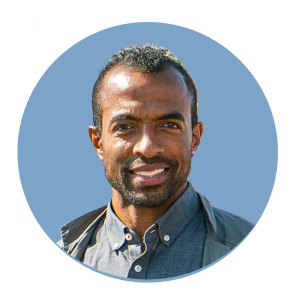The Corporate Social Justice Imperative
Seven Forces Reshaping the Economy
As the historic 2020 U.S. presidential election approaches, the economy continues to rank as voters’ top issue – coming as no surprise given the unprecedented economic turmoil caused by the COVID-19 pandemic. In this seven-part series of Kenan Insights, we offer a current and in-depth analysis of the findings in our latest report, which explores the economic challenges and opportunities facing our nation amid and beyond both the election and the pandemic. The Kenan Institute of Private Enterprise, in partnership with the North Carolina CEO Leadership Forum, has issued Seven Forces Reshaping the Economy to help decision-makers navigate these critical trends and offer pragmatic solutions to the economic shifts that are defining our new normal. This week, we look at how businesses’ efforts to cultivate a diverse and inclusive workplace have intensified in the wake of global social pressure to end systemic racism.
The pandemic has exacerbated long-standing economic and social inequities in American society. Socioeconomic groups that were already experiencing greater workforce challenges prior to the pandemic are now facing larger increases in unemployment as well as higher rates of COVID-19 infection and death. In particular, Blacks and Latinos are dying of COVID-19 at 2.3 and 1.5 times the rate of white people, respectively.1 In parallel, while unemployment has begun to decline for all groups since the height of the economic fallout of the pandemic, in August the gap in the jobless rate between white and Black Americans continued to widen. Whites, Blacks, and Latinos experienced unemployment rates of 7.3 percent, 13 percent and 10.5 percent, respectively.2
Additionally, at the peak of the pandemic shutdowns in May, racial tensions flared when George Floyd, a Black man, was murdered at the hands of Minneapolis police officers. Massive demonstrations and social unrest aimed a new spotlight on systemic racism and social injustice, and the Black Lives Matter (BLM) movement received a wave of national attention and support. According to a Pew Research Center survey conducted in early June, 67 percent of all adults either strongly or somewhat support the BLM movement — a substantial increase from 43 percent in 2016.3 4 Many business leaders, as well as rank-and-file employees, joined the discussion and began to look for ways they could effect change in their own businesses and industries. We discuss some of these initiatives in more detail below, but first we examine more closely the backdrop of the pandemic and associated economic conditions during spring 2020 that has led to a renewed focus on dismantling systemic racism.
Backdrop to Racial Unrest: Uneven Adversity during the COVID-19 Pandemic
The onset of the pandemic and rising racial tensions reinforced each other as certain socioeconomic groups, such as people of color, found themselves more susceptible to both contracting COVID-19 and becoming victims of the economic fallout. The disproportionate impact of the pandemic on people of color have been manifested in a variety of ways. The Kenan Institute has constructed a measure of socioeconomic adversity that is a composite of mental adversity (anxiety and depression rates), healthcare adversity (delayed or unavailable health care) and food insecurity (sometimes or often not having enough to eat). While the index jumped to high levels for all people when the pandemic began, Black, Hispanic, and mixed-race individuals experienced a significantly larger increase than non-Hispanic whites (see Figure 1). Likewise, other measures, such as employment ratios and education outcomes, have been more depressed for people of color.5

Source: Kenan Institute of Private Enterprise6
Business Response to Social Injustice
Historically, most businesses have attempted to stay on the sidelines of controversial issues to avoid alienating customers and limit internal discord. But with the growing awareness of systemic racism in the U.S. and gut-wrenching scenes of violence against Black people mounting, business leaders have increasingly taken a public stance. In many cases, this appears to be led by the businesses’ own concerns, but the shift in public opinion (and increased pressure from customers and employees) solidified the trend toward making public statements. Corporate positioning benefited from the growing evidence supporting the business case for corporate diversity and inclusion policies. Specifically, businesses with more diverse workforces, leadership and boards tend to outperform less diverse businesses.7 Likewise, a movement toward “stakeholder capitalism,” as described by the Business Roundtable, has set the stage for a broader range of policies than would have been considered by many companies even just a few years ago.8
Corporate responses to systemic racism have resulted in two general types of initiatives: those looking internally at how the business treats its own diverse employees, and those looking at the environment outside the company, including relationships with other businesses and the broader community.
Cultivating a Diverse and Inclusionary Workplace
In recent years, many corporations have started implementing more internal diversity and inclusion initiatives out of business necessity. In 2016, millennials became the largest generation in the workforce, and Generation Z began entering the workforce.9 Millennials are far more racially and ethnically diverse than their predecessors, and Generation Z (post-millennials) are even more diverse still.10 With the changing demographics of the American workforce, corporations have had to re-think their traditional business practices, including ways to recruit, train and cultivate top (and diverse) talent. New internal policies include standards for diversity at all levels of the organization, mentorship programs for diverse prospects and junior employees, building stronger relationships with higher education institutions that attract more people of color ( in particular, HBCUs), carefully benchmarking promotion and pay, and more.
But with the public eye on them, companies are being asked by many stakeholders (including employees) whether they are doing enough. Certain industries, such tech and financial services, still struggle to recruit people of color and women into leadership positions. And stakeholders are publicly holding these companies accountable. For example, Wells Fargo CEO Charles Scharf recently came under fire for stating that “there is a very limited pool of Black talent to recruit from.”11 Many countered Scharf’s comment, noting that companies have not a talent problem, but rather more systemic failings that lead to low recruitment and hiring rates of women and people of color at the highest levels of the organization.
Addressing Longstanding External Forces Perpetuating Systemic Racism
In the last two months, some large corporations have announced new externally focused policies. These policies actively seek to address inequities experienced by stakeholders outside the company and could have a more immediate and noticeable economic impact. There are two general types of actions. The first is to stop policies that perpetuate systemic racism. Examples include stores such as Walmart, CVS, and Walgreens discontinuing the practice of locking up haircare products typically used by “multicultural” customers, and tech companies such as Amazon and Microsoft banning the use of their facial recognition software by police (with IBM exiting the business entirely).12 13 Another interesting example has been the commitment by a wide range of technology companies to eliminate insensitive terminology like master/slave for storage devices from their products and product documentation.14
The second type of external policy involves active engagement in programs designed to stimulate diverse economic activity. This includes investing in minority-owned businesses, as well as allocating procurement dollars to diverse businesses and certain communities. Examples include major new commitments by IBM to its supplier diversity program and Bank of America’s pledge of $1 billion to address racial inequality in small business, housing, health and employment.15
Compassionate Leadership to Combat External Mega-Threats
Finally, it is important for corporate leaders to understand how racist and sexist events played out on a national stage can have serious implications for the mental health and welfare of their workforce. Organizational research has long studied how personal life events can affect an employee’s workplace behavior and performance. A growing body is now looking at how events external to an individual can also have a negative impact. In a paper titled “#BlackEmployeesMatter: Mega-Threats, Identity Fusion, and Enacting Positive Deviance in Organizations,” Duke University Fuqua School of Business Professor Angelica Leigh and University of North Carolina Kenan-Flagler Business School Professor Shimul Melwani explore the ways in which adverse societal events that target a specific population (called mega-threats) have spillover effects on that population’s work life. Specifically, they examine how Black employees respond at work to highly publicized instances of police brutality against Black Americans, such as that of the recent cases of George Floyd and Breonna Taylor. Their research shows that in response to these mega-threats, Black Americans have described feeling personally injured, and even targeted, with the news.16 For business leaders, it is important to recognize that these mega-threats have real implications for how Black Americans interact and operate at work. Leigh and Melwani’s research indicates that compassionate leadership and building a workplace environment where minority employees feel empowered to speak up about their feelings surrounding mega-threats can foster a more positive environment of inclusion and belonging, which can lead to long-lasting benefits when recruiting, hiring and retaining a talented and diverse workforce.17
1 Ledur, J. (2020). COVID-19 is affecting Black, Indigenous, Latinx, and other people of color the most. The COVID Racial Data Tracker. Retrieved from https://covidtracking.com/race
2 Saraiva, C. (2020, September 4). Black-White Jobless Gap Widens, Narrows Between Women and Men. Bloomberg. Retrieved from https://www.bloomberg.com/news/articles/2020-09-04/black-white-jobless-gap-widens-narrows-between-women-and-men
3 Parker, K., Menasce Horowitz, J., & Anderso, M. (2020, June 12). Majorities Across Racial, Ethnic Groups Express Support for the Black Lives Matter Movement. Pew Research Center’s Social & Demographic Trends Project. https://www.pewsocialtrends.org/2020/06/12/amid-protests-majorities-across-racial-and-ethnic-groups-express-support-for-the-black-lives-matter-movement/
4 Menasce Horowitz, J., & Livingston, G. (2016, July 8). How Americans view the Black Lives Matter movement. Pew Research Center. https://www.pewresearch.org/fact-tank/2016/07/08/how-americans-view-the-black-lives-matter-movement/
5 Kenan Institute of Private Enterprise (2020). Kenan Dashboard: Reopening Amid COVID-19. https://kenaninstitute.unc.edu/dashboard/reopening-amid-covid-19/
6 Ibid.
7 Gompers, P., & Kovvali, S. (2018, July 1). The Other Diversity Dividend. Harvard Business Review, July–August 2018. https://hbr.org/2018/07/the-other-diversity-dividend (and citations therein)
8 Business Roundtable Redefines the Purpose of a Corporation to Promote “An Economy That Serves All Americans.” (2019, August 19). https://www.businessroundtable.org/business-roundtable-redefines-the-purpose-of-a-corporation-to-promote-an-economy-that-serves-all-americans
9 Fry, R. (2018, April 11). Millennials are the largest generation in the U.S. labor force. Pew Research Center. Retrieved https://www.pewresearch.org/fact-tank/2018/04/11/millennials-largest-generation-us-labor-force/
10 Wang, H.L. (2018, November 15). Generation Z is the Most Racially and Ethnically Diverse Yet. NPR. Retrieved from https://www.npr.org/2018/11/15/668106376/generation-z-is-the-most-racially-and-ethnically-diverse-yet
11 Sandler, R. (2020, September 22). Wells Fargo CEO Reportedly Blames “Limited Pool of Black Talent” for Trouble Reaching Diversity Goals. Forbes. Retrieved from https://www.forbes.com/sites/rachelsandler/2020/09/22/wells-fargo-ceo-reportedly-blames-limited-pool-of-black-talent-for-trouble-reaching-diversity-goals/#ac812e5350a5
12 Associated Press (2020, June 13). Walmart, CVS, Walgreens to stop locking up black beauty products. MarketWatch. https://www.marketwatch.com/story/walmart-cvs-walgreens-to-stop-locking-up-black-beauty-products-2020-06-11
13 Crumpler, W. (2020, May 1). The Problem of Bias in Facial Recognition. Center for Strategic & International Studies. https://www.csis.org/blogs/technology-policy-blog/problem-bias-facial-recognition
14 Cimpanu, C. (2020, August 23). IBM, Microsoft staff rally to remove racially insensitive language from products. ZDNet. Retrieved from https://www.zdnet.com/article/ibm-microsoft-staff-rally-to-remove-racially-insensitive-language-from-products/
15 Nguyen, L. (2020, June 2). BofA Pledges $1 Billion Over 4 Years to Fight Racial Inequality. Bloomberg. https://www.bloomberg.com/news/articles/2020-06-02/bofa-pledges-1-billion-over-4-years-to-fight-racial-inequality
16 Leigh, A., & Melwani, S. (2019). #BlackEmployeesMatter: Mega-threats, identity fusion, and enacting positive deviance in organizations. Academy of Management Review, 44(3), 564-591. doi:10.5465/amr.2017.0127
17 Ibid.





